The 1970s was a transformative era for TV Guide covers‚ blending vibrant art and pop culture. Iconic issues featured shows like Scooby-Doo and The Brady Bunch‚ with illustrations by Jack Davis and others. These covers became nostalgic treasures‚ capturing the decade’s television essence and enduring appeal.
1.1 Historical Context of TV Guide in the 1970s
In the 1970s‚ TV Guide reached its peak as a cultural cornerstone‚ with over 19 million copies circulated weekly. The decade marked a golden age for television‚ with the rise of cable TV and groundbreaking shows. TV Guide became a trusted source for viewers‚ providing detailed listings‚ interviews‚ and behind-the-scenes insights. The magazine celebrated its 25th anniversary in 1974‚ reflecting its enduring influence. This era also saw the introduction of iconic covers that mirrored societal changes‚ from family-oriented sitcoms to socially conscious programming. The 1970s solidified TV Guide’s role as a chronicler of television history and pop culture.
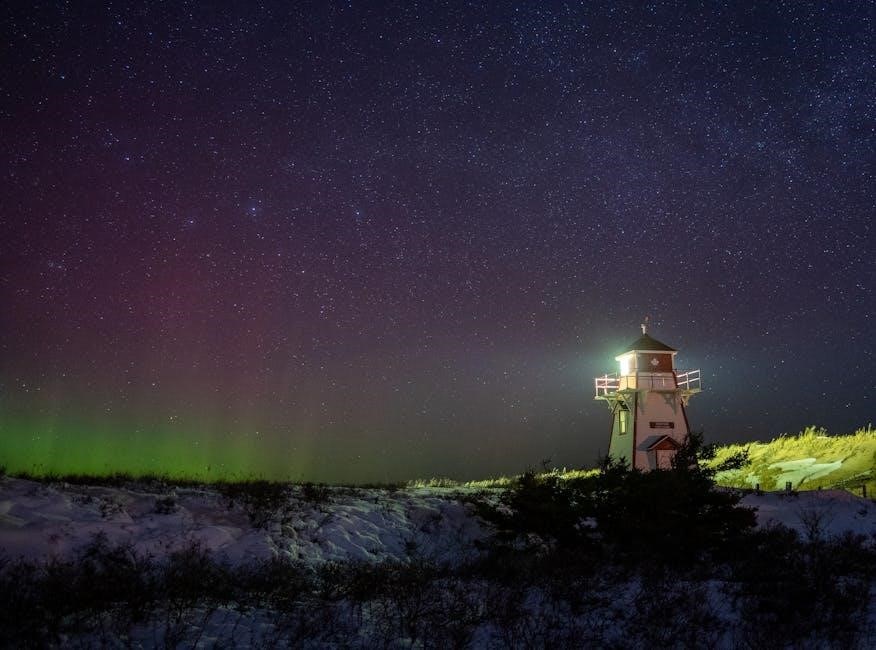
1.2 The Significance of TV Guide Covers
TV Guide covers from the 1970s hold profound cultural and nostalgic value. They served as visual gateways to the decade’s most iconic television moments‚ capturing the essence of popular shows and stars. These covers were often meticulously illustrated or photographed‚ making them collector’s items. They not only reflected the era’s entertainment trends but also mirrored societal shifts‚ from family dynamics to political commentary. The artwork on these covers became synonymous with the golden age of television‚ offering a window into the past that continues to inspire and delight both collectors and retro enthusiasts today.
1.3 Evolution of TV Guide Covers Over the Decade
Throughout the 1970s‚ TV Guide covers underwent a notable evolution‚ reflecting shifting artistic and cultural trends. Early in the decade‚ illustrated covers dominated‚ often featuring whimsical designs by artists like Jack Davis. By the mid-1970s‚ photographic covers gained prominence‚ offering a more realistic glimpse into popular shows and stars. The later years saw a mix of both styles‚ with bold colors and dynamic layouts becoming a hallmark. This evolution mirrored the decade’s transition from nostalgic charm to modern aesthetics‚ capturing the era’s television milestones while appealing to changing viewer preferences and artistic innovations.
Iconic Covers of the 1970s
The 1970s TV Guide covers showcased a diverse range of iconic shows‚ from Scooby-Doo to Star Trek‚ blending animated and live-action series with vibrant‚ memorable designs that captured the era’s television spirit.
2.1 Scooby-Doo and Other Animated Series Covers

The 1970s TV Guide covers featured beloved animated series like Scooby-Doo‚ showcasing the Mystery Inc. gang in vibrant‚ playful designs. These covers often highlighted key episodes or seasonal themes‚ captivating both children and adults. Other animated favorites‚ such as Schoolhouse Rock and The Pink Panther‚ also graced the magazine’s front pages. The artwork was lively and colorful‚ reflecting the era’s nostalgic charm. These covers became collectibles‚ reminding fans of the decade’s iconic cartoons and their lasting impact on television history. The blend of humor and artistry made these issues timeless treasures for animation enthusiasts and retro pop culture lovers alike.
2.2 The Brady Bunch and Family-Oriented Shows
The 1970s TV Guide covers frequently highlighted family-oriented shows like The Brady Bunch‚ showcasing the beloved Brady family in heartwarming poses. These covers often emphasized the show’s wholesome appeal‚ resonating with audiences seeking light-hearted entertainment. Other popular family shows‚ such as Family Affair and The Partridge Family‚ also appeared on the magazine’s front pages. The artwork typically featured bright colors and cheerful illustrations‚ reflecting the era’s emphasis on togetherness and innocence. These covers not only promoted the shows but also became nostalgic reminders of a simpler time‚ capturing the essence of family television in the 1970s.
2.3 Star Trek and Science Fiction Themes
The 1970s TV Guide covers often celebrated the rise of science fiction‚ with Star Trek being a prominent feature. Iconic covers showcased memorable characters like Captain Kirk and Mr. Spock‚ capturing the show’s enduring legacy. The artwork frequently highlighted futuristic themes and pivotal moments from the series‚ appealing to its dedicated fan base. These covers not only reflected the show’s popularity but also the growing influence of science fiction in pop culture. They became collector’s items‚ symbolizing the era’s fascination with space exploration and futuristic ideas. The blend of bold visuals and nostalgic appeal made these covers timeless treasures for fans.
2.4 The Mary Tyler Moore Show and Comedic Icons
The Mary Tyler Moore Show dominated 1970s TV Guide covers‚ celebrating its groundbreaking humor and strong female lead. Moore’s iconic character‚ along with other comedic legends like Carol Burnett and Bob Newhart‚ graced the magazine’s front pages. These covers highlighted the decade’s shift toward sophisticated comedy‚ showcasing characters and moments that defined the era. Vibrant illustrations and playful designs captured the shows’ witty charm‚ making the covers instant collectibles. They reflected the rise of women in comedy and the evolution of sitcoms‚ embedding the series and its stars in pop culture history. The covers remain nostalgic reminders of comedy’s golden age.
2.5 All in the Family and Socially Relevant Programming
All in the Family was a groundbreaking series that tackled controversial topics like racism‚ sexism‚ and politics‚ and its influence extended to TV Guide covers. The show’s protagonist‚ Archie Bunker‚ became a cultural symbol‚ and his appearances on the magazine’s covers highlighted the program’s bold approach to socially relevant issues. These covers often featured provocative imagery‚ sparking conversations about the changing societal norms of the 1970s. The series’ impact on television and its reflection on TV Guide covers underscored the decade’s shift toward more realistic and thought-provoking programming‚ leaving a lasting legacy in both media and culture. These iconic covers remain a testament to the show’s enduring relevance.
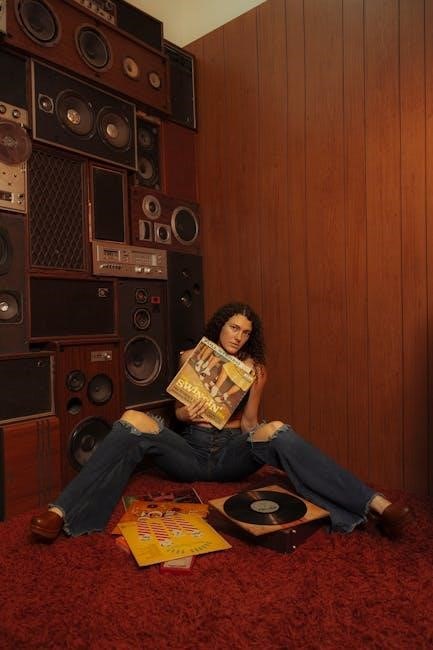
Notable Artists and Illustrators
Notable artists like Jack Davis and others brought unique styles to TV Guide covers‚ blending humor‚ nostalgia‚ and cultural relevance. Their work captured the essence of 1970s television‚ leaving a lasting visual legacy.
3.1 Jack Davis and His Contributions
Jack Davis‚ a renowned illustrator‚ made significant contributions to TV Guide covers in the 1970s. Known for his vibrant‚ humorous‚ and detailed artwork‚ Davis captivated audiences with his unique style. His illustrations often featured beloved TV characters‚ such as those from Scooby-Doo and The Brady Bunch‚ bringing a sense of nostalgia and familiarity. Davis’s work not only highlighted popular shows but also reflected the cultural and entertainment trends of the decade. His contributions remains iconic‚ showcasing the blend of art and pop culture that defined TV Guide covers during this era.
3.2 Norman Rockwell-Inspired Covers
Norman Rockwell-inspired covers in TV Guide during the 1970s brought a nostalgic charm‚ evoking classic Americana. These covers often depicted heartwarming‚ relatable scenes‚ mirroring Rockwell’s signature style. Illustrations emphasized family values and everyday life‚ resonating deeply with audiences. Many covers featured iconic TV characters in settings reminiscent of Rockwell’s artwork‚ blending modern pop culture with timeless tradition. This artistic approach not only paid homage to Rockwell but also elevated TV Guide covers to a new level of artistry‚ making them treasured collectibles for fans and art enthusiasts alike.
3.3 Other Prominent Artists of the Decade
Besides Jack Davis and Norman Rockwell-inspired designs‚ other prominent artists left their mark on TV Guide covers in the 1970s. Illustrators like Salvador Dalí and Robert Peak contributed unique styles‚ blending surrealism and realism. Dalí’s 1968 cover‚ though slightly pre-dating the 70s‚ influenced the era’s artistic direction. Other artists brought vibrant‚ pop-art-inspired designs‚ capturing the decade’s dynamic culture. Their work often featured bold colors and lively compositions‚ making the covers stand out. These artists’ contributions not only reflected the era’s creativity but also helped shape the visual identity of TV Guide‚ turning its covers into collectible pieces of art. Their influence remains a testament to the magazine’s artistic legacy.

Cultural and Historical Impact
TV Guide covers from the 1970s reflected societal changes‚ documented key television moments‚ and played a significant role in shaping pop culture. They became cultural artifacts‚ preserving the era’s identity and influence‚ while their vibrant designs and iconic imagery continue to inspire nostalgia and admiration today.
4.1 Reflecting Societal Changes of the 1970s
The 1970s TV Guide covers mirrored the decade’s societal shifts‚ showcasing diverse programming that addressed civil rights‚ feminism‚ and political issues. Shows like All in the Family and The Mary Tyler Moore Show highlighted changing attitudes‚ while covers featuring these series became cultural snapshots. The era’s counterculture movement and growing awareness of social issues were visually represented‚ reflecting the nation’s evolving values. These covers not only entertained but also served as historical records‚ capturing the vibrancy and complexity of the 1970s. They remain a testament to how television and its imagery influenced and reflected societal transformation during this pivotal decade.
4.2 The Role of TV Guide in Pop Culture
TV Guide covers from the 1970s played a pivotal role in shaping pop culture by featuring iconic shows and stars. They became a weekly snapshot of trending entertainment‚ influencing viewer preferences and sparking conversations. Covers highlighted major TV moments‚ from Scooby-Doo to Star Trek‚ embedding these shows into the cultural zeitgeist. The magazine’s artistic approach‚ with illustrations by Jack Davis‚ added an extra layer of appeal‚ turning covers into collectible art. As a result‚ TV Guide wasn’t just a listings magazine but a cultural icon‚ bridging television and visual art to leave a lasting impact on 1970s pop culture and nostalgia.
4.3 Capturing Key TV Moments of the Decade
TV Guide covers of the 1970s encapsulated pivotal moments in television history‚ from iconic series premieres to unforgettable finales. Covers spotlighted beloved shows like The Brady Bunch‚ Star Trek‚ and The Mary Tyler Moore Show‚ immortalizing their impact. They also highlighted milestone events‚ such as specials and awards ceremonies‚ making them a visual archive of the decade’s entertainment landscape. The artwork often reflected the cultural significance of these moments‚ blending humor‚ drama‚ and nostalgia. These covers not only documented key TV events but also became collectible artifacts‚ preserving the era’s pop culture legacy for future generations to cherish and revisit. Their timeless appeal continues to captivate audiences today.
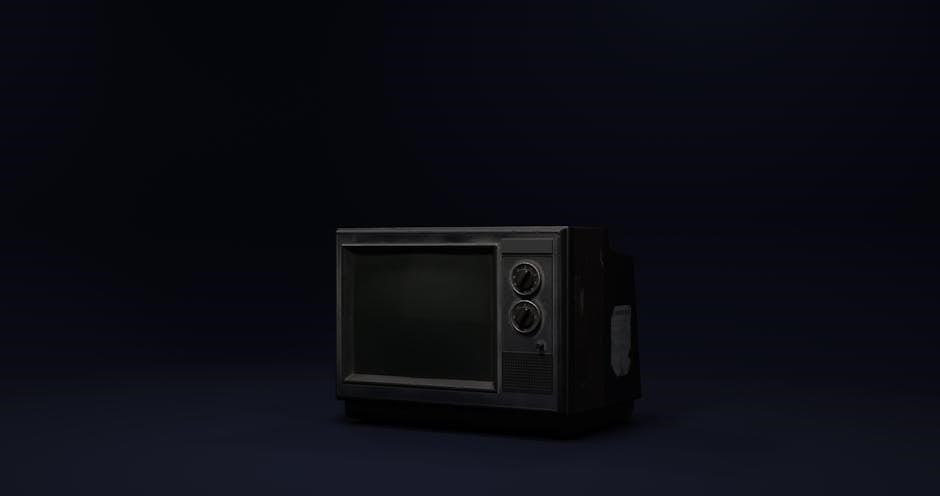
Design Trends and Styles
The 1970s TV Guide covers showcased vibrant design trends‚ blending illustrated artwork by artists like Jack Davis with photographic imagery. Bold color schemes and dynamic layouts captured the era’s pop culture essence‚ making each cover a memorable snapshot of television history.
5.1 The Rise of Illustrated Covers
The 1970s saw a surge in illustrated TV Guide covers‚ blending creativity with nostalgia. These covers‚ often crafted by renowned artists like Jack Davis‚ featured vibrant‚ hand-drawn designs that captured the essence of popular shows. Unlike photographic covers‚ illustrations allowed for unique interpretations of characters and themes‚ making each issue a standout. This artistic approach not only reflected the decade’s dynamic pop culture but also became a defining feature of TV Guide’s visual identity. The illustrated covers were widely admired‚ turning them into collectibles and cementing their place in television history as timeless works of art.
5.2 Photographic Covers and Their Influence
Photographic covers gained prominence in the 1970s‚ offering a more realistic and immediate visual connection to popular TV shows. Unlike illustrated covers‚ photographs provided a direct glimpse into the personalities and characters of the era’s most beloved series. Shows like Charlie’s Angels‚ The Brady Bunch‚ and Star Trek were frequently featured‚ capturing the essence of their on-screen charm. These covers not only highlighted the stars but also became iconic symbols of 1970s pop culture. The shift to photography influenced the magazine’s visual identity‚ blending authenticity with nostalgia and leaving a lasting impact on the design of future TV Guide issues.
5.3 Color Schemes and Visual Appeal
The 1970s TV Guide covers showcased vibrant color schemes that mirrored the decade’s dynamic pop culture; Bold‚ eye-catching hues like deep reds‚ electric blues‚ and sunny yellows were commonly used to grab attention. These color choices not only reflected the era’s aesthetic but also enhanced the visual appeal of the covers. The playful use of contrasting colors and dynamic typography created a lively‚ energetic vibe that resonated with audiences. Whether featuring illustrations or photographs‚ the covers’ color schemes played a crucial role in making them memorable and iconic‚ ensuring TV Guide remained a standout publication during this transformative era.
Popular TV Shows Featured
The 1970s TV Guide covers highlighted a wide array of popular shows‚ from sitcoms like All in the Family to dramas such as Charlie’s Angels. Variety and talk shows like The Tonight Show also graced the covers‚ showcasing the decade’s diverse television landscape and its cultural impact.
6.1 Sitcoms and Comedy Series
The 1970s saw a surge in popular sitcoms and comedy series‚ many of which were prominently featured on TV Guide covers. Shows like The Mary Tyler Moore Show‚ The Brady Bunch‚ and All in the Family became cultural phenomena‚ with their characters often gracing the magazine’s front pages. These covers‚ often illustrated by artists like Jack Davis‚ showcased the vibrant humor and relatable themes of these series. Photographic covers also gained traction‚ highlighting the charisma of stars from shows like Happy Days and Charlie’s Angels. These covers not only promoted the shows but also reflected the decade’s evolving comedy landscape and societal changes.
6.2 Drama and Action Series
Drama and action series dominated the airwaves in the 1970s‚ and their popularity was often showcased on TV Guide covers. Shows like Charlie’s Angels‚ Kojak‚ and Columbo were frequent cover subjects‚ with their stars featured in dynamic poses. The covers highlighted the intensity and intrigue of these series‚ capturing the essence of their gripping storylines. Photographic covers became more prevalent‚ offering a realistic glimpse into the high-stakes world of action dramas. These covers not only promoted the shows but also reflected the decade’s fascination with crime-solving and adventure genres‚ making them a staple of 1970s pop culture. Their visual appeal continues to resonate with retro TV enthusiasts.
6.3 Variety and Talk Shows
1970s TV Guide covers frequently highlighted popular variety and talk shows‚ such as The Tonight Show‚ The Mike Douglas Show‚ and The Carol Burnett Show. These covers often featured charismatic hosts and guests‚ showcasing the lively entertainment and humor of the era. Photographic images dominated‚ capturing the energy of live performances and interviews. The covers also promoted special episodes‚ such as holiday-themed broadcasts or milestone events. They became a way to celebrate the unique blend of comedy‚ music‚ and celebrity culture that defined these programs. The vibrant visuals and star-studded imagery made these covers highly collectible‚ reflecting the decade’s love for entertaining television.

Memorable Cover Themes
The 1970s TV Guide covers showcased holiday-themed‚ seasonal‚ and tribute designs‚ celebrating iconic events and honoring legendary figures in television‚ while capturing the decade’s vibrant cultural spirit.
7.1 Holiday-Themed Covers
TV Guide’s 1970s holiday-themed covers celebrated festive occasions like Christmas‚ Halloween‚ and Thanksgiving with vibrant‚ nostalgic designs. Many featured beloved characters from popular shows‚ such as Scooby-Doo and The Brady Bunch‚ in seasonal settings. These covers often included illustrations of families gathering‚ holiday traditions‚ and iconic symbols like snowmen or pumpkins. Notable artists like Jack Davis and Norman Rockwell-inspired styles brought warmth and charm to these issues. Limited edition holiday covers became highly collectible‚ capturing the spirit of the era and offering a timeless connection to the decade’s pop culture and entertainment.
7.2 Seasonal and Event-Based Covers
TV Guide’s 1970s covers often highlighted seasonal events and special programming‚ such as summer specials‚ sports championships‚ and award shows. These issues showcased popular TV personalities and shows‚ with vibrant artwork that reflected the excitement of the occasion. For example‚ covers featuring Scooby-Doo and The Brady Bunch tied into summer viewing themes‚ while others celebrated major sporting events like the Super Bowl. Bright colors and dynamic designs made these covers stand out‚ capturing the essence of the era’s entertainment. Many of these event-based covers became sought-after collectibles‚ offering a nostalgic glimpse into the decade’s pop culture moments.
7.3 Tribute Covers to Icons
TV Guide’s 1970s covers occasionally paid tribute to iconic figures in entertainment‚ celebrating their impact on television. These special issues often featured portraits of legendary stars like Elvis Presley or Lucille Ball‚ created by renowned artists such as Jack Davis. The covers were designed to honor the careers of these cultural icons‚ with detailed illustrations that captured their essence. Limited edition tribute covers became highly collectible‚ offering fans a unique way to remember their favorite stars. These issues not only highlighted the stars’ contributions but also served as a nostalgic reminder of their influence on TV history‚ making them cherished keepsakes for collectors.
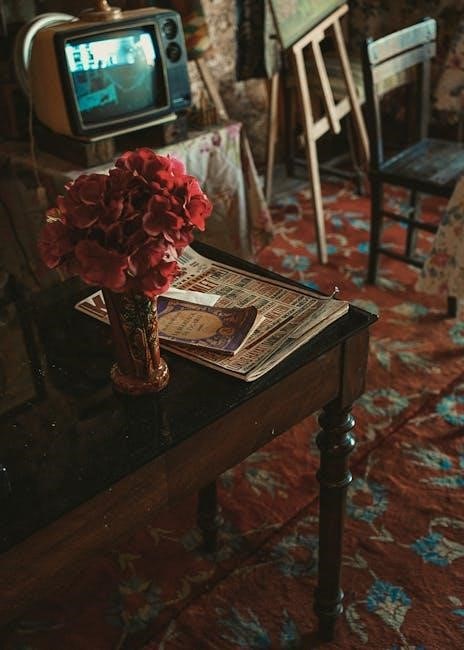
Rare and Collectible Covers
Rare TV Guide covers from the 1970s‚ featuring unique artwork or limited editions‚ are highly sought by collectors. Issues like Salvador Dali’s 1968 cover or Jack Davis’s illustrations are particularly prized‚ making them valuable additions to any collection.
8.1 Limited Edition Covers
Limited edition TV Guide covers from the 1970s are highly collectible‚ often commemorating special events or featuring exclusive artwork. For instance‚ the 60th anniversary issue included six unique covers with mosaics of iconic TV characters. These rare covers‚ such as Salvador Dali’s 1968 design or Jack Davis’s illustrations‚ were produced in small quantities‚ making them treasures for collectors. Their exclusivity and artistic value have driven their demand‚ with many now considered rare and valuable additions to any collection of vintage TV Guide memorabilia.
8.2 Covers Featuring Rare Artwork
Some TV Guide covers from the 1970s showcased rare and unique artwork‚ making them highly sought after by collectors. Notable examples include illustrations by Jack Davis‚ known for his vibrant‚ detailed style‚ and covers inspired by Norman Rockwell‚ which brought a timeless‚ Americana feel. Rare artwork also appeared in special issues‚ such as Salvador Dali’s iconic 1968 cover‚ which was reprinted in the 1970s. These covers often featured hand-drawn designs or experimental techniques‚ adding to their exclusivity. Their rarity and artistic significance have made them treasured items among vintage television memorabilia enthusiasts‚ with many now displayed as cultural artifacts.
8.3 Collectors’ Favorites
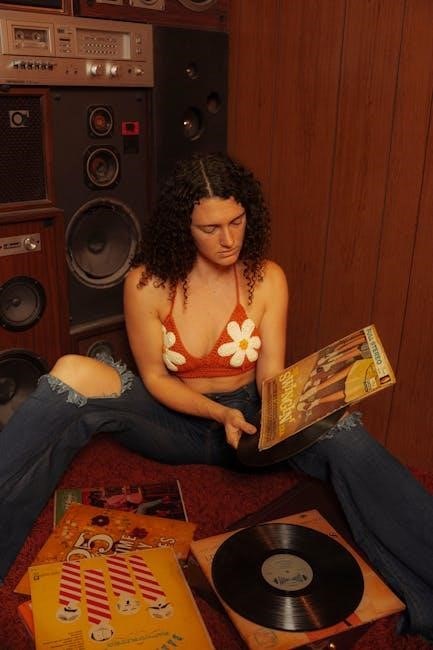
Among the most cherished TV Guide covers of the 1970s are those featuring beloved shows like The Brady Bunch and Scooby-Doo‚ which evoke nostalgia for many collectors. Covers with unique artwork‚ such as illustrations by Jack Davis‚ are highly prized for their distinctive style. Additionally‚ covers commemorating milestone events or anniversaries‚ like the 60th birthday of TV Guide‚ are sought after for their historical significance. These covers not only reflect the era’s pop culture but also serve as timeless reminders of iconic television moments‚ making them invaluable additions to any collection. Their rarity and emotional appeal drive their desirability among enthusiasts.
The Legacy of 1970s TV Guide Covers

The 1970s TV Guide covers left a lasting impact on pop culture‚ inspiring modern designs and fostering nostalgia. Their vibrant art and iconic themes continue to captivate collectors and historians alike‚ preserving the era’s television history for future generations to appreciate and celebrate.
9.1 Influence on Modern TV Guide Designs
The 1970s TV Guide covers have profoundly influenced contemporary design‚ with modern issues often incorporating retro styling and vibrant colors. The decade’s emphasis on illustrated covers and iconic imagery has inspired designers to blend nostalgia with innovation. For instance‚ TV Guide’s 60th-anniversary issue featured mosaics of past covers‚ highlighting the enduring appeal of 1970s art. This blend of classic and modern aesthetics ensures that the legacy of 1970s covers remains relevant‚ continuing to shape how television is visually represented in print and digital media today. Their influence is a testament to the timeless appeal of bold‚ creative design.
9.2 Nostalgia and Retro Appeal
The 1970s TV Guide covers evoke strong nostalgia‚ transporting fans back to a simpler era of television. Iconic shows like Scooby-Doo‚ The Brady Bunch‚ and Star Trek adorned covers‚ reminding viewers of childhood memories and shared cultural experiences. The vibrant illustrations and retro designs have become timeless‚ appealing to both older generations and younger audiences discovering these gems. Many fans collect vintage covers‚ cherishing them as artifacts of a bygone era. This nostalgia fosters a deep emotional connection‚ making 1970s TV Guide covers a beloved part of pop culture history and a symbol of enduring retro charm.
9;3 Archival Preservation Efforts
Efforts to preserve 1970s TV Guide covers have grown significantly‚ with digital archives and collector communities working to safeguard these cultural artifacts. Many vintage issues are now digitized‚ ensuring their availability for future generations. Platforms like eBay and specialized archives house rare covers‚ while enthusiasts meticulously restore and catalog them. TV Guide itself has celebrated its legacy through anniversary issues‚ showcasing historic covers. These preservation efforts highlight the enduring value of 1970s covers as both nostalgic reminders and historical documents‚ ensuring their place in the collective memory of television and pop culture history.
The 1970s TV Guide covers are a timeless tribute to the era’s television and pop culture‚ cherished for their artistic charm and nostalgic appeal.
10.1 Final Thoughts on the Era
The 1970s TV Guide covers represent a vibrant era of television history‚ blending nostalgia with artistic brilliance. From Scooby-Doo to Star Trek‚ these covers immortalized iconic shows and cultural shifts. Artists like Jack Davis and Norman Rockwell-inspired designs brought unique charm‚ making the covers collectible treasures. Reflecting societal changes and pop culture‚ they captured the essence of the decade. Today‚ these covers evoke nostalgia and remain a testament to the golden age of television‚ preserving memories for future generations to appreciate. Their timeless appeal ensures they will forever be cherished as artifacts of a bygone era.
10.2 The Timeless Appeal of 1970s TV Guide Covers
The 1970s TV Guide covers hold a timeless appeal due to their nostalgic charm and artistic craftsmanship. Featuring iconic shows like The Brady Bunch and Star Trek‚ these covers evoke memories of a bygone era. The vibrant illustrations‚ often created by renowned artists such as Jack Davis‚ captured the essence of popular culture. Their retro aesthetic and historical significance make them cherished collectibles. Today‚ they bridge generations‚ allowing modern audiences to connect with the past while appreciating their artistic and cultural value. The enduring allure of these covers lies in their ability to transport viewers back to a simpler‚ iconic time in television history.
10.3 Looking Ahead: The Future of TV Guide Collectibles
The future of TV Guide collectibles is bright‚ with increasing interest in vintage media. As nostalgia for the 1970s grows‚ rare covers featuring iconic shows and artwork are becoming highly sought after. Digital platforms are making these covers more accessible‚ while limited editions and special events continue to drive demand. The rise of online marketplaces has also fueled the collectibles market‚ allowing fans to own pieces of television history. With their unique blend of art and nostalgia‚ TV Guide covers from the 1970s are poised to remain treasured items for both collectors and pop culture enthusiasts alike.



